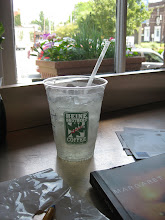ALLEGORY and a Magical Realist Story - How does it work? Does it work?
First of all, in order to think in allegorical terms, you as a reader need to be interested in the text of the narrative as something more than just another story. This means that you are willing and wanting to create links ('intertextual') between the narrative itself and the place/person that gave the narrative its name. Could the narrative stand as a representation of something else? (think: Lord of the Files or Brave New World). This might even bring you to the study of a genre called 'roman a clef' - a novel with a key: a narrative describing real-life events behind a fascade of fiction!
In this case, you (if interested), need to look more closely at Columbia (place), and Gabriel Garcia 'Gabo' Marquez (person/writer) - who is he? what motivates his writing? when did he write the story? what's his realtionship with his people, his culture? what's his relationship with the world at large? In other words, a combination of HISTORICAL AND BIOGRAPHICAL criticism.
Now, how do you find 'satisfactory' answers to your questions.
If you like investigating on your own, I suggest you take a look (and read carefully) the information contained in this link:
http://www.themodernword.com/gabo/gabo_biography.html
Otherwise, to get you started: think of Erendira, body and soul, as the country of Columbia (before and after conquest), think of the Grandmother as the rich mestizo landowners who have continuouslly sided with the military junta against the communist rebels, think of Ulises as the European intervention (The United Fruit Company), think of the oranges with diamonds in them as the heroine exports that have divided Columbia; or perhaps think larger, think of Erendira as all of Latin America before conquest, or?

